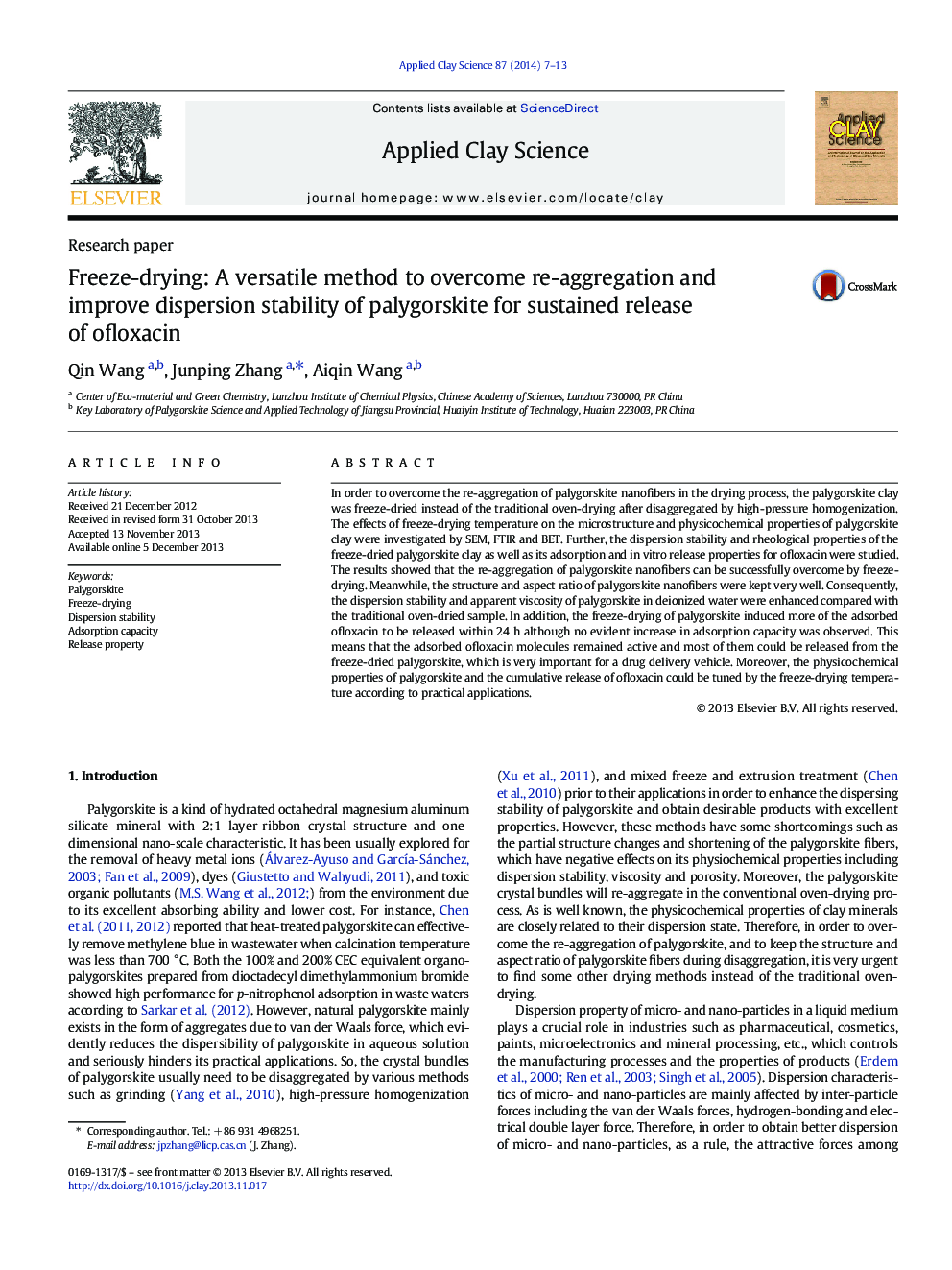| Article ID | Journal | Published Year | Pages | File Type |
|---|---|---|---|---|
| 1694942 | Applied Clay Science | 2014 | 7 Pages |
•Freeze-drying successfully keeps disaggregated state of palygorskite nanofibers.•Freeze-drying evidently increases the apparent viscosity and dispersion stability.•Freeze-drying facilitates release of the loaded ofloxacin.
In order to overcome the re-aggregation of palygorskite nanofibers in the drying process, the palygorskite clay was freeze-dried instead of the traditional oven-drying after disaggregated by high-pressure homogenization. The effects of freeze-drying temperature on the microstructure and physicochemical properties of palygorskite clay were investigated by SEM, FTIR and BET. Further, the dispersion stability and rheological properties of the freeze-dried palygorskite clay as well as its adsorption and in vitro release properties for ofloxacin were studied. The results showed that the re-aggregation of palygorskite nanofibers can be successfully overcome by freeze-drying. Meanwhile, the structure and aspect ratio of palygorskite nanofibers were kept very well. Consequently, the dispersion stability and apparent viscosity of palygorskite in deionized water were enhanced compared with the traditional oven-dried sample. In addition, the freeze-drying of palygorskite induced more of the adsorbed ofloxacin to be released within 24 h although no evident increase in adsorption capacity was observed. This means that the adsorbed ofloxacin molecules remained active and most of them could be released from the freeze-dried palygorskite, which is very important for a drug delivery vehicle. Moreover, the physicochemical properties of palygorskite and the cumulative release of ofloxacin could be tuned by the freeze-drying temperature according to practical applications.
Graphical abstractFigure optionsDownload full-size imageDownload as PowerPoint slide
